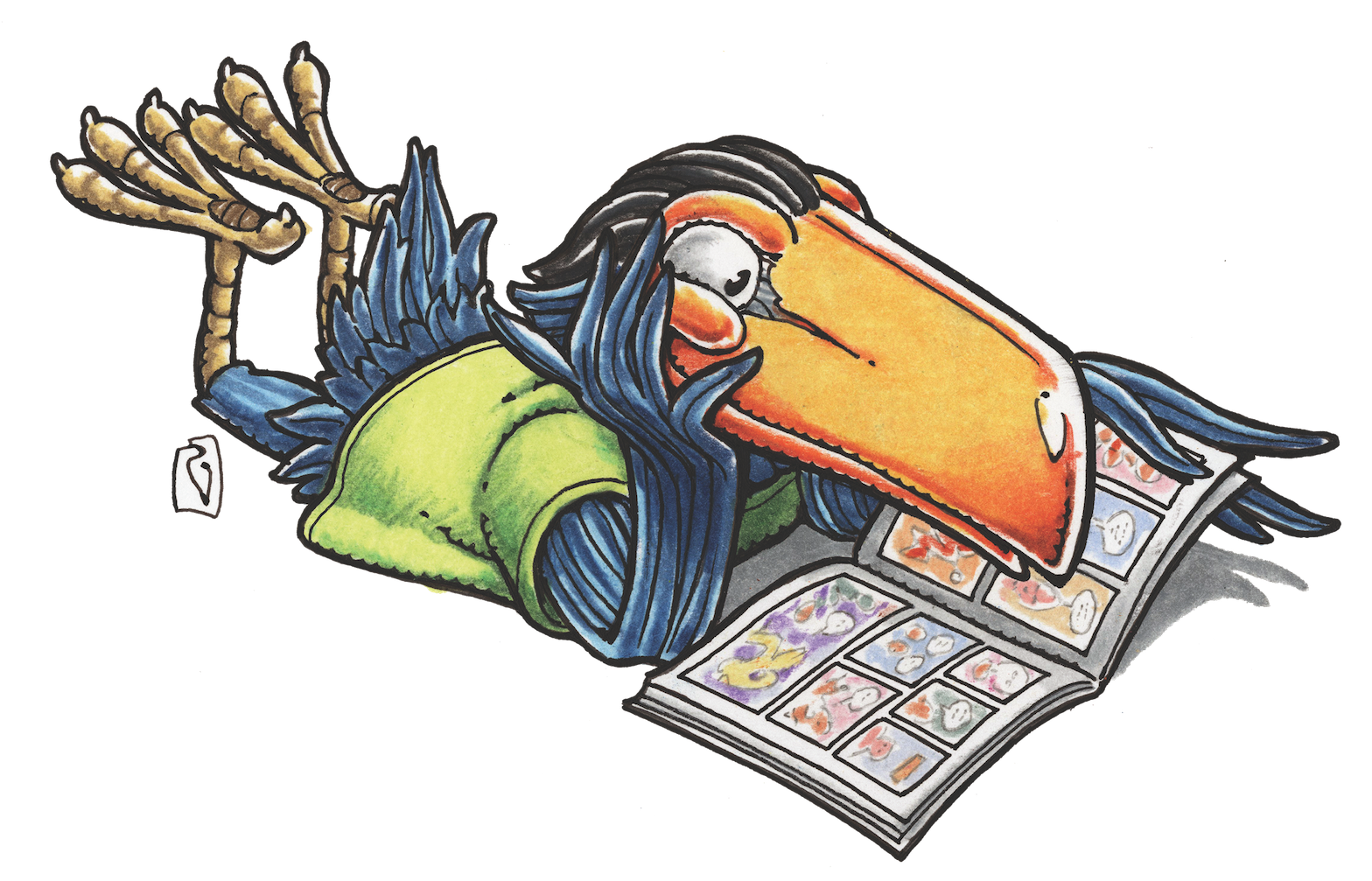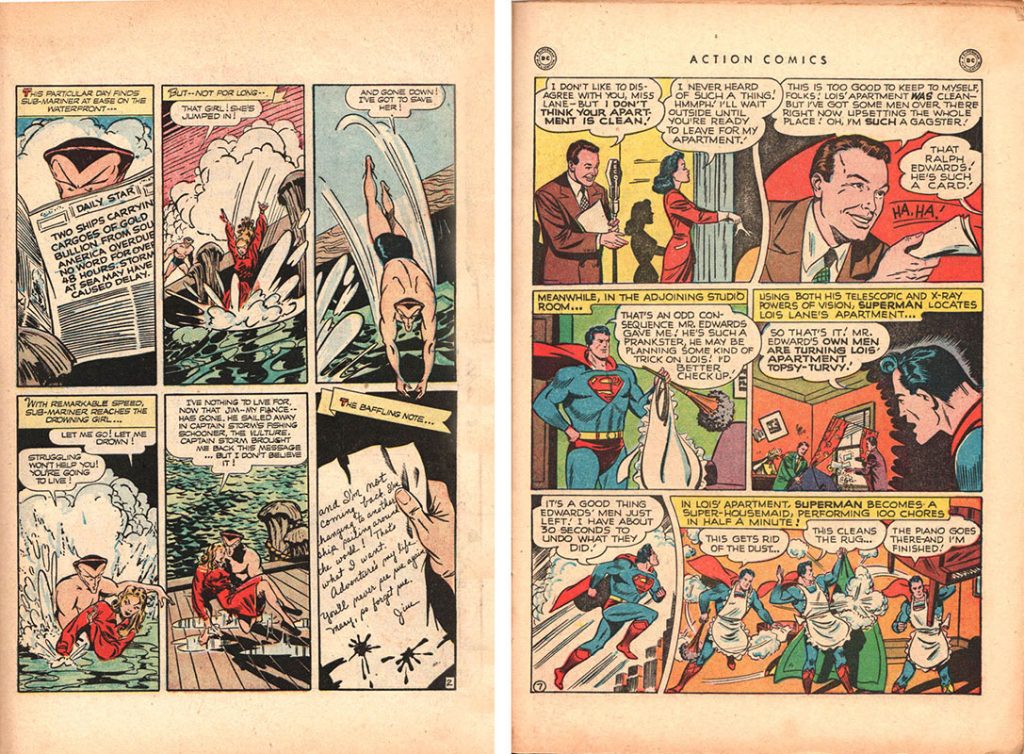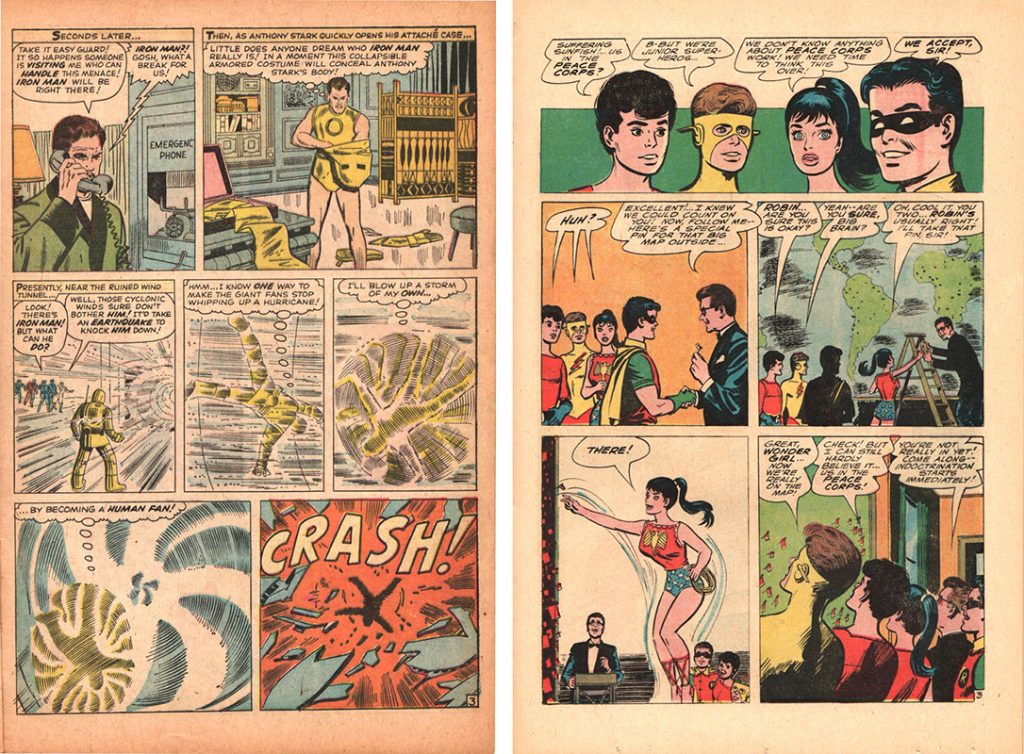MAGGIE’S WORLD BY MAGGIE THOMPSON
Maggie’s World 066: Classics


Did you ever read Stephen Becker’s Comic Art in America? It was a sample-packed volume that introduced readers in 1959 to the comics that had entertained the preceding couple of generations. (Rumor has it that much of the content was actually provided by pros of his day; in any case, I’ll just refer to the writer as Becker.)
There were samples of the work of (to name a few) James Swinnerton, T.S. Sullivant, Richard Fenton Outcault, Rudolph Dirks, F. Burr Opper, and Winsor McKay.
Mind you, Becker never so much as tipped his hat to such creators as Ed Wheelan, Harvey Kurtzman, and Jack Kirby at a time when all were alive and two were (very) active.
Even more to be noted was his lack of information on the guy now acknowledged to be one of the most influential in the art form: Rodolphe Töpffer (who never got so much as a passing sentence). As a result, the first time I became aware of that pioneer was in a 1965 book by E. Wiese, Enter: The Comics (Rodolphe Töpffer’s Essay on Physiognomy and the True Story of Monsieur Crépin). (To digress: Töpffer even inspired the first Big Name Comics Fan: Faust author Johann Wolfgang von Goethe, who encouraged his work.)
Prior to Becker, there were two other major reference books on comic art. Both did include a tip of the hat to Wheelan, but all three paid only passing attention to comic books.
Martin Sheridan provided Comics and Their Creators: Life Stories of American Cartoonists (1942 and 1944), which had an entry on Jerry Siegel and Joe Shuster.
Coulton Waugh acknowledged the existence of comic books in The Comics (1947): “Even in its short span of a few years … the history of useful comic books presents a most brilliant spot in the whole story of the comics.” He, too, provided a look at Superman.
In his chapter “The Lyric Clowns,” Becker singled out Krazy Kat by George Herriman, Pogo by Walt Kelly, Barnaby by Crockett Johnson, Peanuts by Charles Schulz, and work by Milt Gross and Rube Goldberg. We’ve been lucky enough in recent years to see reprints of their work.
And Becker did note the influence of Palmer Cox (1840-1924), whose “Brownies” flourished in the 1890s, especially in St. Nicholas Magazine. By the way, decades later, Walt Kelly (1913-1973) provided his own version in comic books for Dell.
But the focus of the reference works before 1960 was comic strips—and, in many cases, the creators of the 1950s had been most influenced by the comic strip classics of those earlier decades. (Recently, someone in a Facebook group devoted to one of the creators whose stories led to my working in comics asked members of that group to identify their ages. I think the youngest was in his or her 50s.)

Then It Was the 1960s—and Later
So it is that each generation builds on the foundation of classics by earlier creators. In the 1960s, the writers and artists had grown up admiring the work of writers and artists of the 1940s and 1950s. Superman, Batman, Sub-Mariner, Donald Duck, Little Lulu, Archie: Those characters formed some of the basis of our pop culture development.
It was, of course, hard for us to track down those stories in those days, if we’d lost most of our copies because of lack of storage or lack of time or in fire, flood, or parental discarding. Nevertheless, we knew that Archie and Betty should go together, while Veronica and Reggie were clearly meant for each other.
Eventually, kids realized that it was possible to work in comics as artists, writers, or editors as an actual profession. When they did, they built on what they’d already enjoyed so much. And some of them even managed to arrange reprints so that others could see what had attracted them.
More Recently
Now? Who’s building new foundations now? And who will do so in the future?

Already, we’ve seen that many of today’s creators have adopted what they admire and have provided their own takes on manga, anime, comics they read in school, and characters they knew primarily from movies and TV.
Is Raina Telgemeier showing kids today how to do their own autobiographical tales? Are boys and girls already trying to draw Mo Willems’ Elephant or Pigeon? Do young readers understand fantasy because they’ve seen collections of Calvin and Hobbes or Bone or (if they’re a little older) Sandman? Locke & Key? Ms. Marvel? Saga? Manga you’ve never read?
Maybe tomorrow’s creators are now rereading their parents’ collections of Charles Schulz’s Peanuts with an eye to telling their own stories. Maybe they’ve decided to explore the origins of characters they’re seeing in theaters and on TV. (Was Robin always such an annoying doofus? Exactly how did Iron Man create that costume—and did it always look like that, because it keeps changing in the movies?)
A couple of years ago, I saw Rob Liefeld sitting at a table at a convention—and he had a long line waiting to see him. He’d entered the field in the late 1980s, and now there was a line that seemed to consist largely of dads with kids in tow. Was it before Deadpool had made it to the big screen? I can’t be sure now, but my feeling was that many of those dads were eager to get a chance to show their kids someone who’d made comic books so much fun for them years before.
Why Bring It up Now?
Gift-giving season is almost upon us, and a few samples of classics might introduce recipients of those treats to entertainments of the past. You can, of course, check out the list of Eisner Award nominees from earlier this year for suggestions for more current gifts. And don’t forget to drop by the comics shops in your area to ask for more suggestions. We live in times rich with terrific comic art.
And maybe, someday, all the classics of the wide variety of comics will be kept in print, and students will be as capable of enjoying collections of the work of Ed Wheelan, Gaylord Du Bois, and Warren Tufts as easily as they find plays by Shakespeare and Williams, poems by Byron and Whitman, films by Wilder and Spielberg, and novels by Austen and Dickens.
We’re getting there.
Maggie’s World appears the first Tuesday of every month here on Toucan, and will return in January 2019.